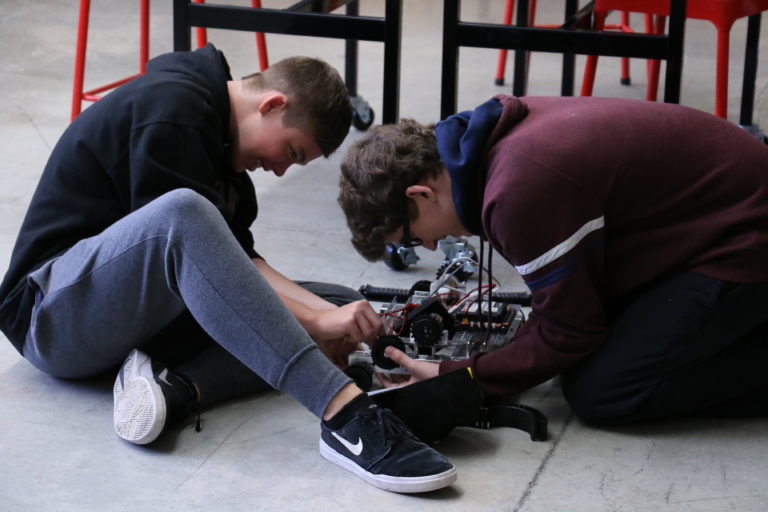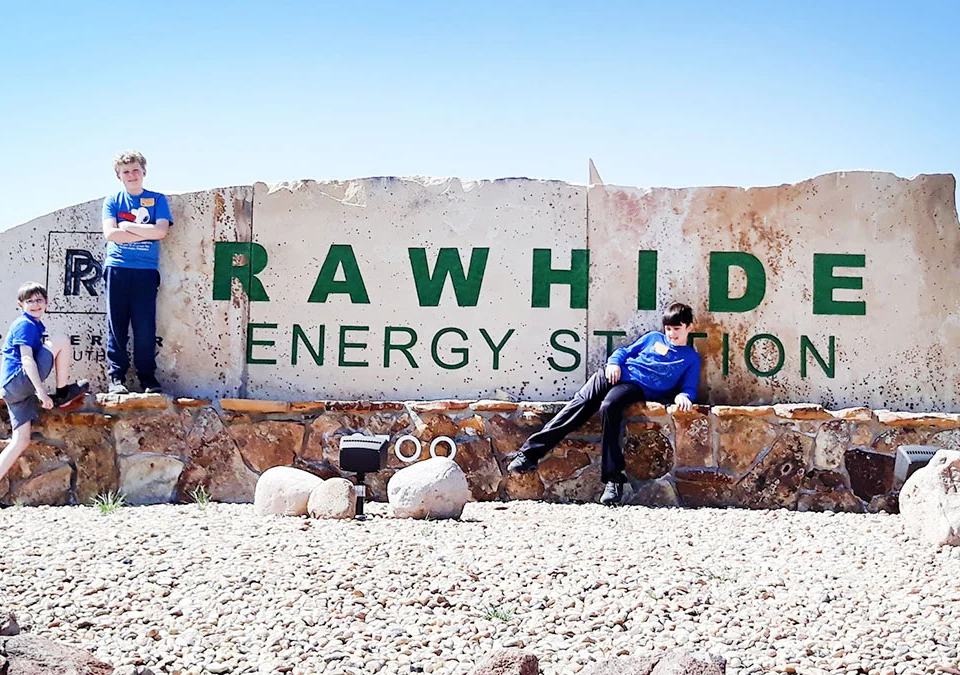Already a member? Log in to the Member Site at members.mastery.org.

MTC Wins Reimagine Education Gold Award
December 6, 2018
Update on the Mastery Transcript
January 3, 2019Member Voices: Gibson Ek


We sat down recently with Julia Bamba, principal of Gibson Ek, a public high school in Washington State that is also an MTC member school and part of the MTC Prototype Working Group (PWG). Now in its third year, Julia shared with us the progress that Gibson Ek has made as a Big Picture “real world learning” school, and how Gibson Ek is benefiting from participating in MTC’s PWG.
When the Gibson Ek team set out to design a school that would both challenge high achievers and provide a strong sense of community and support for students who were struggling in more traditional environments, they started by visiting different types of schools and taking to a lot of students about what they wanted out of a high school experience. They learned two important pieces of information that informed their way forward:
- Students want a real voice in their education. They want what they are learning to be aligned with their interests, and they want to know that it is relevant to their own goals and their visions for their futures.
- They want to be part of a strong community that values their voice and growth.
Armed with this information, Gibson Ek set out to create a school that is centered around project-based learning. A physical plan that combines open, collaborative maker spaces with traditional classrooms, and a curriculum that is designed around interdisciplinary projects that students create based on their own interests has led to a high level of student engagement and parent satisfaction.
A central component of Gibson Ek’s real-world curriculum is its commitment to internships in the local community which provide the opportunity for content learning, plus the development of critical non-cognitive skills that might include communication, collaboration, risk taking–and even just the basic skills needed to be able to organize your own time in an office environment. Gibson Ek student, Sebastian Mendoza ’20, had this to say about his internship at a local radio station:
“Interning at the radio station KEXP has given me the experience and confidence to break out of my shell to chase what I am truly passionate about. KEXP has also helped me expand my musical and personal horizons by showing me new musical ideas. The DJ program has especially helped me to develop my music tastes and who I am as a person because the two are so closely connected. Last year I joined the morning show production team which has created more opportunities for me. I am now part of the KEXP Youth Resonance, on the first ever youth DJ team which I named 90.teen. I listen and review albums for appropriate FCC content, and I am the youngest member of the KEXP Community Advisory Board, which includes members of the art and music community in Seattle.”
Developing competencies against which to measure students has been an iterative process that started a year before the school opened. The ongoing challenge is to develop competencies that are specific enough to be clearly understood, and flexible enough to enable the staff to develop scaffolding to meet each student where s/he is. As Julia described it, “As faculty, we need to remind ourselves to maintain a balance where students understand our expectations and feel accountable, with an environment in which they have opportunities to pursue their visions for what they want to learn based on the outlooks they have for their futures.” Julia went on to say that when they “encourage students to work on something they really love, that is both relevant to their own interests and real world problems, they see the rich work that meets multiple competencies.”
As challenging as it is to develop measurable but flexible competencies, it is equally challenging to create an assessment protocol that communicates to the outside world (college admissions officers, employers, and even parents) the depth and richness of each student’s work–in a succinct and convincing way. Because it is so important to have a transcript that will enable Gibson Ek and other schools to showcase their students’ very personal work, Julia is grateful to be part of the MTC’s PWG that is co-designing the new Mastery Transcript. “It is so valuable that MTC has developed a PWG. I love that MTC is really listening to us and using us to help solve this challenge as a team. I feel heard, and really trust the process that MTC is leading. Like it is important for our students to have a voice in their learning, it is important for us to have a voice in developing a transcript that showcases their work.”
Building character, and and focusing on each student’s character to meet their needs, is a key part of the Gibson Ek experience. The morning we spoke with Julia, she had just been to a student exhibition where students were talking about their projects and the learning environment at Gibson Ek. They explained, “It takes a lot of courage to go to school at Gibson Ek. Here, you learn through failures. Here, failures are seen as positive, unlike at other schools that I have been too.” Another continued, “It’s not just about failing though–it’s explaining what you have overcome and what you’re going to do moving forward that is important.”
When Julia reflects about what will make a new Mastery Transcript most valuable, it is the idea that it will be able to capture and reveal each student’s unique character. Being able to profile student mastery of content and skills, in a way that leads with character, will enable colleges and employers to really see each individual student.
When asked about her perception of the current prototype, Julia said, “It looks beautiful. It looks like a rich portfolio. It looks credible and trusted.” And, she added, “I can’t wait to start using it!”
For more information about Gibson Ek, visit them at www.gibsonek.org.




